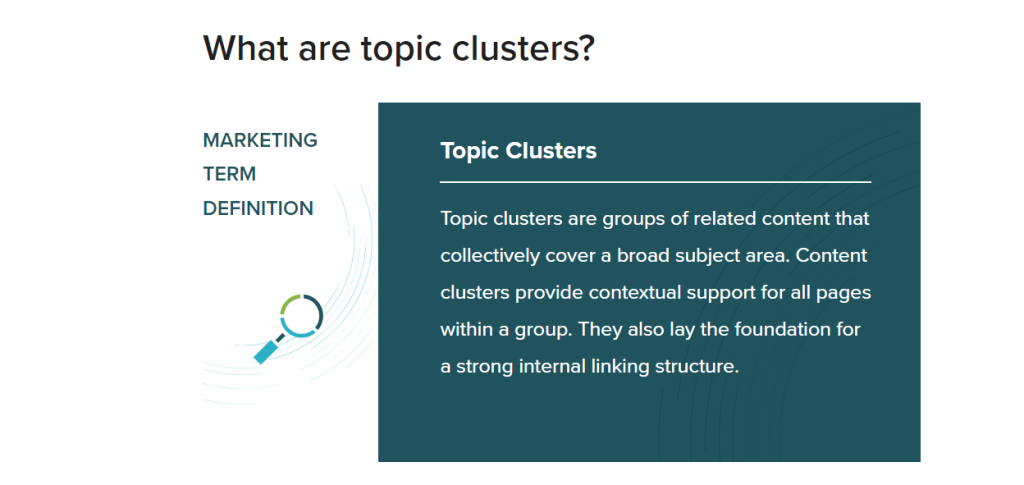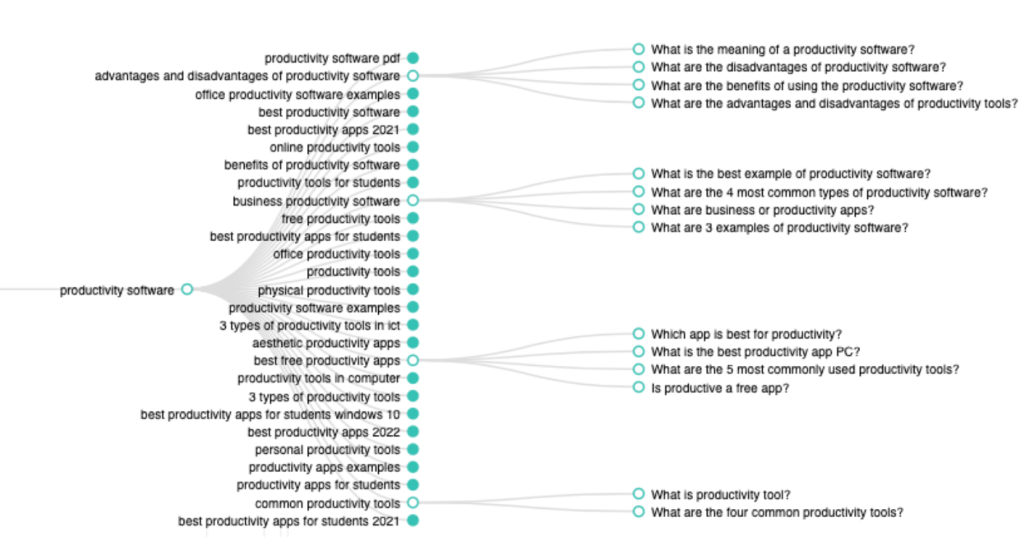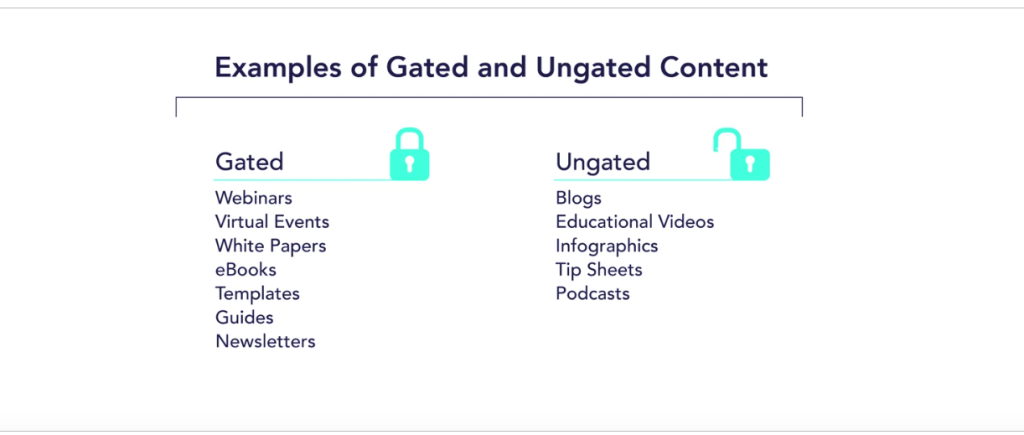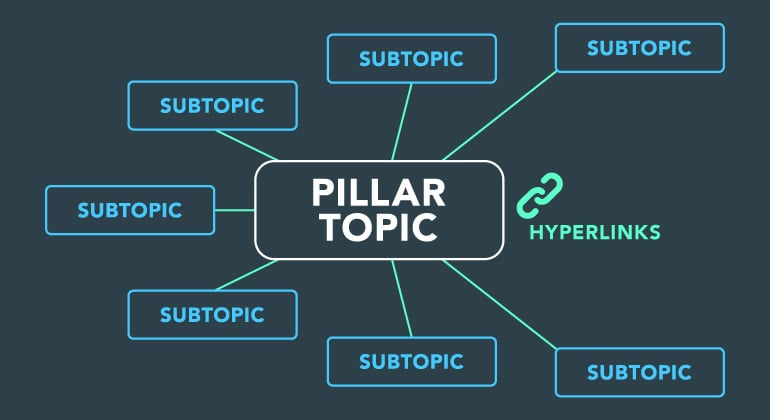Two strategies that have emerged as particularly effective in content marketing are the use of topic clusters with gated content.
Individually, they offer unique advantages.
But when combined, they can supercharge your SEO and lead generation efforts, making them an important part of your SEO Content Strategy.
Let’s dive deep into how you can utilize the combined power of these strategies.
Table of Contents
Introduction to Topic Clusters and Gated Content
At its core, a topic cluster strategy is a method of organizing content around a central theme or topic.
This is achieved by creating a ‘pillar’ page that covers the main topic in detail. Surrounding this pillar are multiple related articles or ‘cluster content’ that delve into subtopics.
These cluster articles then link back to the pillar page, creating a web of interrelated content.

Gated Content, on the other hand, refers to content that’s locked behind a virtual gate.
To access it, users typically need to provide some information, like an email address.
Benefits of Integrating Topic Clusters with Gated Content
Enhanced User Experience: A well-structured content layout aids in navigation, helping users find the information they seek effortlessly.
Topical Authority Building: By covering a topic comprehensively through a pillar page and related articles, you position yourself as an authority in that domain.
Data Collection: Gated content provides insights into your audience’s preferences, allowing for better-targeted marketing campaigns.

Does SEO work for gated content?
A common concern with gated content is its potential negative impact on SEO.
The assumption is that If the content is entirely behind a gate, search engines like Google might not index it, which can hurt its search rankings.
Whereas this depends on the type of content and the gating mechanism, there are several ways to make SEO work for gated content:
Landing Pages:
Even if the content is gated, the landing page can be optimized for search engines.
Ensure the landing page has SEO-friendly content, meta tags, and descriptions that highlight the value of the gated content.
Partial Gating:
Some websites use a strategy where a portion of the content is visible, and the rest is gated.
This allows search engines to index the visible portion, driving organic traffic to the page.
Rich Snippets:
Provide a detailed summary or snippet of the gated content that can be indexed by search engines.
Avoid Cloaking:
It’s essential not to show one version of the content to search engines and another to users, as this can be considered cloaking and can lead to penalties.
What Is The Best Gated Content?

The “best” gated content depends on the goals of the organization and the preferences of the target audience. However, some universally effective forms of gated content include:
- E-books and Whitepapers: Detailed guides or research reports that provide in-depth insights on a particular topic.
- Webinars: Live or recorded sessions that cover industry trends, tutorials, or expert discussions.
- Exclusive Videos: Tutorials, interviews, or behind-the-scenes content that isn’t available to the general public.
- Templates and Tools: Resources like design templates, calculators, or software tools that can aid users in their tasks.
- Courses and Training Modules: Educational content that offers structured learning on a specific subject.
How To Use Topic Clusters With Gated Content
When approached the right way, Gated Content prepared through Topic clusters can be utilized to capture high-quality leads.
Search engines love structured content, and the interlinked nature of topic clusters helps them understand the relationship between different pieces of content, potentially boosting rankings.
Here are the steps to approach when implementing Topic Clusters with Gated:
Steps to Implement Topic Clusters with Gated Content
1. Identify Central Topics:
Audience Research: Use tools like Google Analytics and other SEO Tools to understand what your audience is looking for.
Surveys and feedback forms can also provide insights.
Keyword Research: Tools like SEMrush or Ahrefs can help identify high-volume keywords related to your domain.
2. Create a Pillar Page:

Comprehensive Coverage: Ensure the pillar page is exhaustive, covering all facets of the main topic. Ideally, a strong pillar article can range between 3,000 – 5,000 words.
Optimize for SEO: Use relevant keywords naturally, ensuring that the primary keywords are distributed evenly throughout important sections of the article, including subheadings.
3. Develop Cluster Content:
Quality Over Quantity: It’s essential to provide value in each piece of content. Ensure they’re well-researched and offer unique insights.
Diverse Content Types: Mix up your content. Use blog posts, infographics, videos, and more to cater to different audience preferences.
4. Integrate Gated Content:
Value Proposition: Ensure that your gated content offers significant value. It should be something users are willing to “pay” for with their contact details.
Easy Access: Use clear CTAs and ensure the gating process is as frictionless as possible.
5. Interlink Content:
Natural Linking: Ensure links between content pieces feel natural and are contextually relevant.
Use Anchor Text Wisely: The clickable text (anchor text) should be relevant to the linked content, aiding in SEO.
How to Use a Content Gate Properly
- Prioritize Quality: Before gating content, ensure your site offers high-quality content freely.
- Decide on Gated Content: Determine which content formats and topics will be most valuable when gated.
- Determine Gate Requirements: Decide what information you’ll require from users to access the gated content.
- Implement a Backend System: Ensure you have a system to manage and utilize the information collected.
- Maintain a Balance: Don’t overdo it. Keep a healthy balance between free and gated content.
- Be Receptive to Feedback: Listen to your audience, but also monitor the performance of your content to find areas of improvement.
How do you Promote Gated Content to Boost SEO?
Promoting your content requires a strategic approach to ensure that your target audience is aware of its value and is enticed to access it.
Here are some effective methods to promote this type of content to generate more traffic for your website:
Optimize Landing Pages:
Create a dedicated landing page that highlights the benefits of the gated content.
This page should have a compelling copy, relevant images, and a clear call-to-action (CTA) prompting users to access the content.
Share teasers, snippets, or previews of your gated content on platforms like Facebook, Twitter, LinkedIn, and Instagram.
Additionally, use targeted ads to reach a specific audience who would find the content valuable.
Email Marketing:
Send out newsletters or dedicated email campaigns to your subscribers, informing them about the new gated content and its benefits.
Write Informative Blog Posts:
Write related blog posts as cluster content that expounds on the pillar topic.
Within these posts, include CTAs that direct readers to the gated content.
Webinars and Events:
If the gated content is a webinar or an online event, promote it through event platforms, email reminders, and partnerships with influencers or industry experts.
Influencer Partnerships:
Collaborate with industry influencers or bloggers to review or mention your gated content, reaching a wider and more engaged audience.
Conclusion
The combination of topic clusters and gated content provides a powerful blend of organized content delivery and lead generation. By recognizing the significance of these approaches and deploying them strategically, businesses can not only enhance their SEO but also build a valuable pool of leads. This integrated strategy not only strengthens your online presence but also cultivates a loyal audience eager to engage with your brand.



